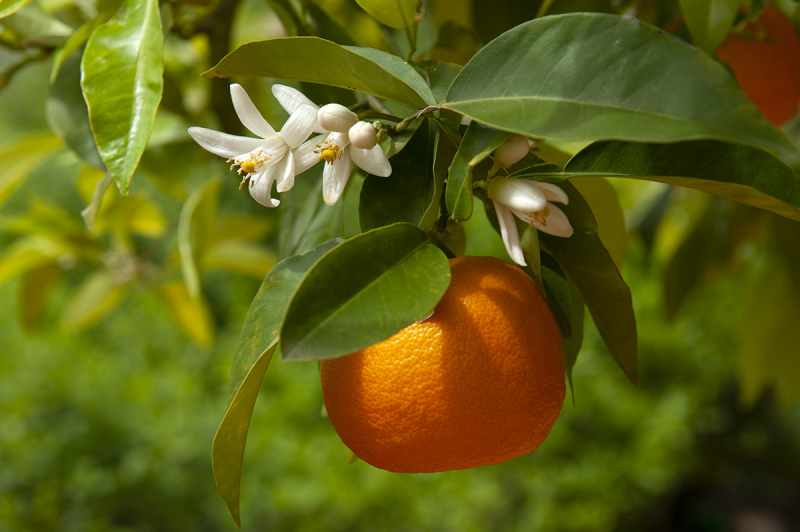Seville
Seville oranges, botanically classified as Citrus aurantium, are a bitter or sour variety that grows on evergreen trees and is a member of the Rutaceae or citrus family. Its name comes from Seville, Spain when they were brought from Asia during the 12th century and became an emblem for the city. It is a hybrid between a pomelo and a mandarin. Seville's streets are lined with more than 14,000 bitter orange trees that were planted as part of the city's urban landscape. These trees offer year-round foliage and summertime shade. Despite the fact that the Spanish city is surrounded by orange trees, Seville oranges are primarily exported from Spain to England to manufacture orange marmalade. Additionally, due to the oranges' sour flavor, cooked preparations are preferred over fresh ones.
Seville oranges are round to oblate in shape and small to medium in size, measuring 7-8 centimeters in diameter on average. The thick, yellow-orange rind has some noticeable knobs and bumps and is rough and dimpled in texture. The rind also has many oil glands that secrete flowery essential oils with a faint bitter undertone. The white pith, which is spongy and bitter, adheres to the meat underneath the rind. The flesh is smooth, and delicious, and varies in color from yellow to deep orange. It is separated into 10–11 segments by delicate white membranes and is packed with numerous cream-colored seeds. Seville oranges are aromatic when ripe and have a sour, acidic, tangy, and mildly bitter flavor.












